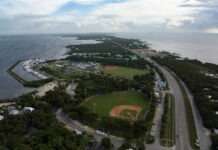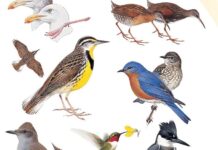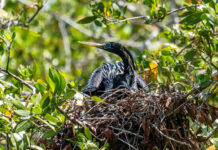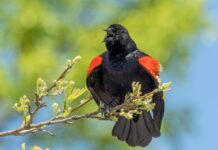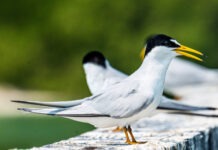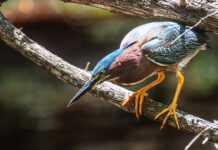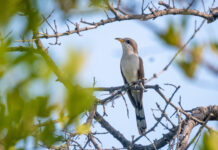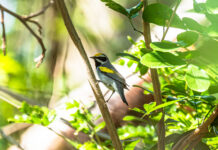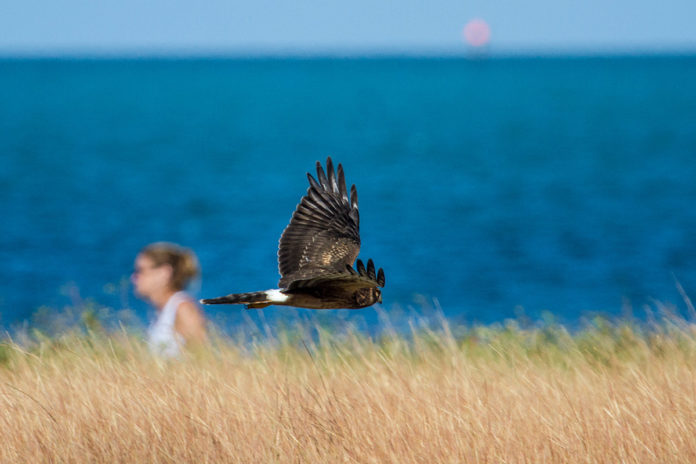
I was not expecting the Gray Ghost, not expecting it to come up the way it did over my shoulder, not expecting it to move on ahead and around the low bank of trees and out of my life before I could really even fathom it was there. It moved as if guided by unseen forces, smooth, quiet and effortless. I saw it for about three seconds, too fast to even think about raising my camera.
I had one of those moments where I was simultaneously ecstatic that I saw it and crestfallen that the experience had been so brief.
In the years after my father died I had a series of dreams where I would run into him out in the world – in the parking lot of a grocery store or flipping through the jazz section at Tower Records – and he’d say something like, “Oh, hey, yeah, turns out I didn’t die.” And then he’d pause for a second and say, “But I am dying now.”
Seeing a Gray Ghost always gives me the slightest twinge of that, a small and unpredictable swirl of joy and melancholy that fades in intensity faster than it rises. Which is a lot of spiritual baggage to project onto a bird that is just simply going about his day.
The Gray Ghost is a nickname for the male adult northern harrier.
The “gray” part is pretty obvious when you see them in a photo or an illustration in a field guide – their upper parts and face are a sort of a sleek ash gray. (They have some black wingtips thrown in for visual drama.) The “ghost” part has to be experienced in real life. It comes from the way northern harriers can appear out of nowhere, silent and assured, seemingly unaffected by gravity, as if existing on a different plane than our own mortal one.
Part of this derives from harriers being some of the slowest fliers out there. It comes down to wing load – long wings and a relatively light body mass make it seem as if they can just hang there, almost stopping at will in midair. Their long tails act as powerful rudders, making them highly maneuverable. The downtempo speed facilitates their hunting habits.
Nearly any account you read about the species describes them as owl-like because of their facial disks – concave groups of feathers that surround their eyes and direct sound to their ears, a bit like a parabolic mic. It allows them to hear things like mice scuttling through the grass – to track them as they start and stop, as they change direction, as they run full speed. It allows them to reach down with their long legs, seemingly out of nowhere, and grab their unsuspecting prey with needle-sharp talons. The name harrier comes directly from their tendency to harry prey.
A male northern harrier’s wings are about 10% shorter than a female’s, but they tend to be about 35% lighter. Which makes their wing load even lower and their slowest speed even slower, thus contributing to their ghost-like manner.
Northern harriers breed across the upper half of the U.S., their range stretching all the way to northern Canada and Alaska. They are leapfrog migrants, meaning the southern part of the population tends to stay in the same territories year round, but the northern population migrates over and through to more southerly territories, extending all the way into the Keys and across the Caribbean and even to South America.
According to the numbers from the Florida Keys Hawkwatch, an average of 635 northern harriers migrate into the Keys every fall. Last year was a record year, in which they counted 1,037 of them. (How many stay in the Keys and how many cross over to Cuba and points south is still unclear.)
Most of the harriers seen in the Keys are young birds, brown, but with an orangey breast and belly. (Females look similar to juvenile birds, but with a pale breast and belly.)
In the early 2000s I spent a couple seasons up in Marathon, trapping, banding and releasing migrating hawks. We managed to trap a few dozen northern harriers every year. Almost all were juveniles. Five or six times we caught adult females.
Occasionally a Gray Ghost would come into the field where our mist nets were set up. Mostly they just moved on south without hesitating. Occasionally one would take a couple loops around the field, interested, but wary. Only once did we manage to catch an adult male and put a band on it.
Most years, the Florida Keys Hawkwatch starts on Sept. 1. That tends to be when the migration really gets going. This year, mostly to see if there was a significant flight of swallow-tailed kites coming through the Keys, they started earlier, on Aug. 1. And there have been some interesting results – 648 swallow-tailed kites so far, and 724 osprey. Mixed in with all of that, they’ve caught sight of four northern harriers, all of them Gray Ghosts.
It’s unlikely that four birds means much in a statistical sense, but it’s kind of interesting that all the ones that have come through this early have been adult males. And it’s nice to think of them moving around the Keys, gliding through people’s lives, both seen and unseen, specters that are as real as any of us.
One of these days I might even get a photo of one.








